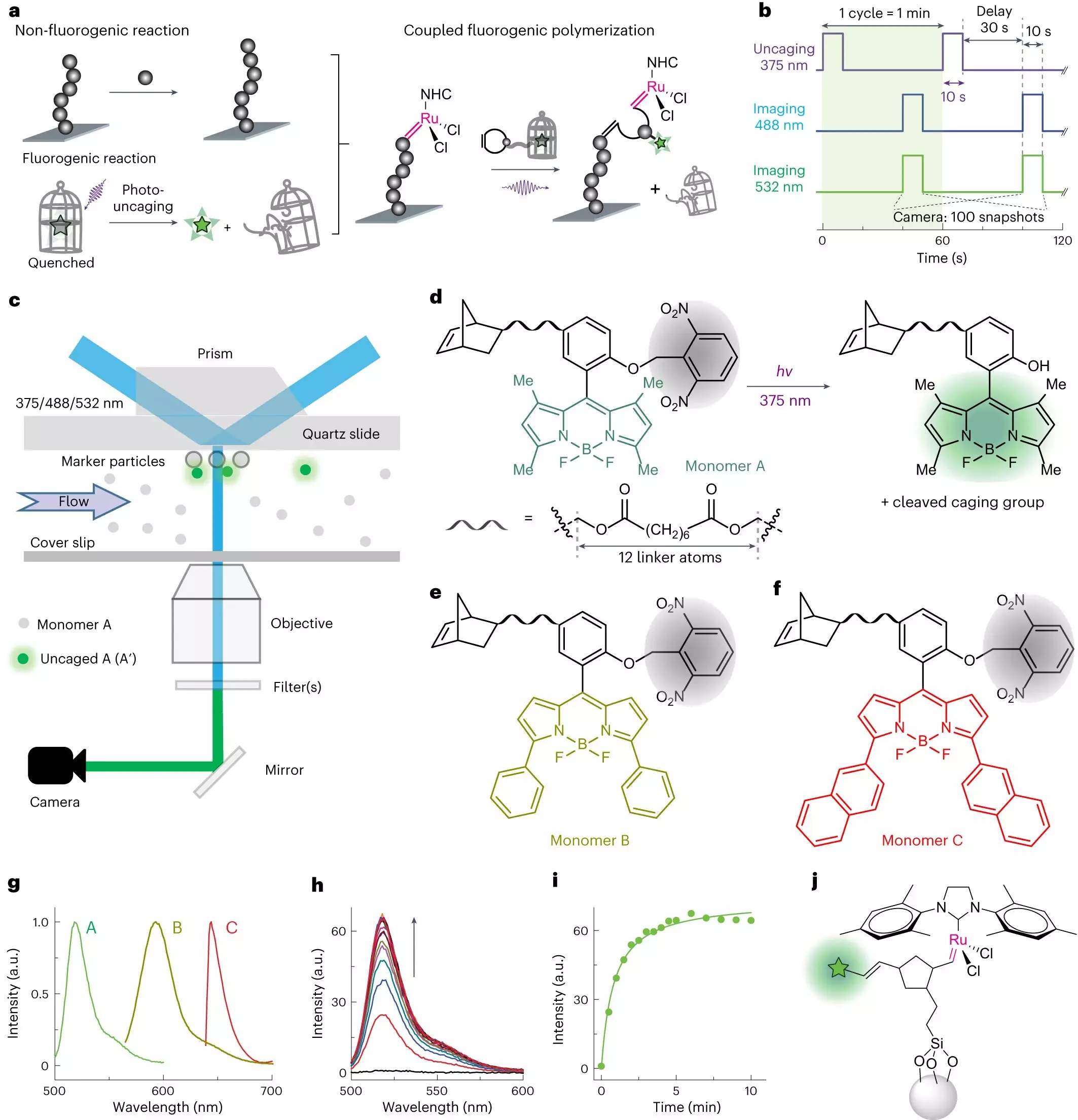The ubiquity of synthetic polymers in our everyday lives cannot be overstated. These materials, such as nylon and polyester, are found in clothing, cookware, and adhesives. At a molecular level, the chains that form these polymers are made up of monomers, which are the building blocks responsible for their unique functionality. Copolymers, which consist of different types of monomers in the same chain, offer the ability to fine-tune the properties of materials. Understanding the monomer sequence is vital in unraveling the molecular composition of synthetic polymers and harnessing their full potential.
Scientists, led by Peng Chen from the College of Arts and Sciences, have developed an innovative technique called Coupled REaction Approach Toward Super-resolution imaging (CREATS). This groundbreaking method provides a way to image polymerization catalysis reactions at a single-monomer resolution and differentiate monomers from one another using fluorescent signaling. Chen and his team have successfully published their work, titled “Optical Sequencing of Single Synthetic Polymers,” in the prestigious journal Nature Chemistry.
Unveiling the Mysteries of Copolymers
Monomers in copolymers come together like a string of beads. While simple polymers consist of identical monomers, the incorporation of different monomers in copolymers leads to their diverse properties. The precise arrangement of these monomers within the copolymer is critical in determining its characteristics, such as stiffness or flexibility. Nature has intricate control over the monomer sequence in natural polymers like proteins, where the specific arrangement of the 20 amino acid monomers is essential for their functionality. However, in synthetic polymers, humans are the architects, and precise control over the monomer arrangement is often lacking.
The sequencing of copolymers is an uphill battle primarily due to the heterogeneity of synthetic polymers. Each individual polymer chain can vary in length, composition, and sequence, necessitating sequencing methods capable of resolving and identifying individual monomers. While some methods allow scientists to control the monomer arrangement in short polymers of about 10 to 20 monomers, longer chain lengths prove to be more elusive.
Enter CREATS, the groundbreaking technique developed by Chen and his colleagues. This method enables the determination of the monomer sequence as the polymer is formed, molecule by molecule. By coupling the polymerization reaction with another reaction that produces fluorescent signals, CREATS makes each monomer visible. As each monomer is added to the polymer chain, it emits a unique puff of light induced by a laser. This puff of light can be distinguished by its color, either green or yellow, allowing the researchers to identify the specific monomer being incorporated into the polymer.
Having successfully established the ability to determine the sequence of individual polymers, the next frontier is to correlate structure and function. By combining the sequencing data with measurements of synthetic polymer properties, researchers can uncover the guiding principles for polymer design to achieve specific desired properties. Understanding how sequence controls property empowers scientists to design polymers with tailored sequences that lead to desired functionalities. This breakthrough paves the way for novel materials that meet specific performance requirements in various industries.
The development of CREATS and the ability to sequence synthetic polymers at a single-monomer resolution opens up new avenues of research in polymer science. With greater control over monomer sequences, researchers can push the boundaries of material design, creating innovative polymers with unprecedented properties. This breakthrough has far-reaching implications for industries ranging from textiles to medicine, where tailored materials with enhanced performance parameters are in high demand.
This revolutionary technique brings us closer to understanding the intricate world of synthetic polymers. Through precise sequencing of monomers, researchers can unlock the secrets behind the properties of these materials. By harnessing the power of copolymers and tailoring their sequences, we can achieve materials that surpass the limitations of traditional polymers. Synthetic polymers are no longer a realm where nature holds complete control but rather an exciting frontier where human engineering can create materials with remarkable potential. The future of material design is bright, thanks to the groundbreaking work of Chen and his team.


Leave a Reply